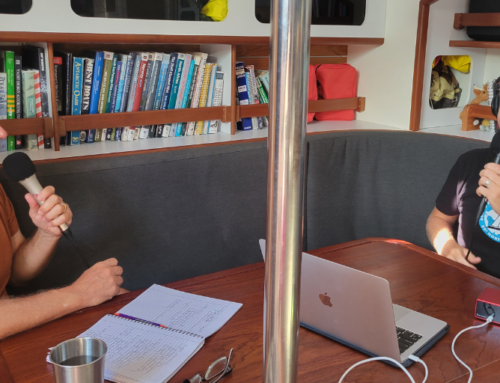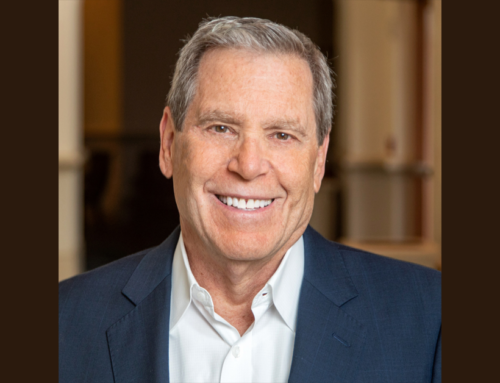A Guest Post by Jeremy Keil, CFP®, CFA, CIMA® of Keil Financial Partners.
If you’re like me, then you’ve heard the same type of advice like “Segment your book of business into A, B, C, D clients” and “Take great care of your A&B clients.” I’ve also heard that “Your A clients subsidize your C&D clients.” Since I believe that every client deserves to be well taken care of and that one client shouldn’t be subsidizing another I thought, “There must be a better way.”
Here’s how you can use your “optimal client fee range” to make sure that you have a healthy book of business, that you are the right advisor for your clients, and that your top clients aren’t subsidizing your lower-revenue clients.
Determine Your Optimal Client Fee Range
Start with your average fee, let’s say $10,000 per year. Now double it and then halve it. You’ll end up with a range of $5,000 to $20,000 per year. This range can now serve as a benchmark for your financial advice business.
While it’s not a perfect correlation, client fees are the best approximation of the level of client problems and opportunities that need your guidance. If a client pays you $10,000/year they probably have $10,000+ problems, and clients that pay you $1,000/year probably have $1,000+ problems. You should get really good at solving the level of problems for the people whose problems you want to solve (and who are willing to pay you that level of fee).
If a client is paying more than the upper end of your fee range, their situation may be more complex than you can handle, and they may be at risk of leaving you to find a higher-skilled advisor.
If the client is paying less than the lower end of this range, then it’s possible your other clients are subsidizing this client’s services and/or it’s a sign that their level of complexity doesn’t fit into the level of advice you provide.
Evaluating Client Fees
You will almost definitely have clients above and below your optimal range. Mathematically, it’s probably hard not to!
The first step is to look at the clients whose fees fall below your range. Most likely they are underpaying for your advice, and you should intentionally decide if that’s OK since they are being subsidized by either your family or your top clients.
Now there will likely be exceptions, but set a rule for that. The Perfect RIA suggests 5 per 100. I’m a little less strict and think 10% makes sense.
Now look at the clients above the range. Those clients are definitely your top clients that you need to pay special attention to. If they are paying you that much money, make sure you have the right skills to handle their situation and think of ways you can add extra value to make sure they are getting more value than they are paying for.
Applying the Process
Here’s how I used this range to evaluate two scenarios:
Not buying, then later selling a book of business
When I was approached by Dave, another advisor in my office building, to buy out his book of business, the offer at first seemed intriguing. Then I learned that Dave’s average client revenue was below my firm’s client fee range.
We’ve done a good job of creating a service model that helps a specific set of clientele. Virtually every new client we would be serving didn’t fit into our fee range and would need a different service model.
Creating a new service model to serve a significant set of new clients didn’t make sense from a business perspective, and I didn’t pursue this deal.
About a year later, I realized that we had too many clients to serve well. I spent a year looking for a new advisor, still hadn’t found one, and was talking to a friend who said, “I just hired this new advisor because he has great potential, but I don’t have enough clients for him to work with right away.”
I used the optimal client fee range to discover I had far more than the 10% threshold for clients below the fee range. It turned out the average client fee for that subset was within the average fee range for my friend’s firm.
A few months later the new advisor had 50 new clients to work with, my firm had a tighter focus on our remaining clients, and, most importantly, clients had an advisor whose fee and skill set met their problem set.
Transitioning clients to a new advisor
A few years back my associate advisor, John, was ready to become a lead advisor. The question was, which clients made the most sense to have him take over? While highly capable, John had less experience than me. So it made sense to have the less complex clients work with John.
I looked at my top client fee and divided by 4 to get to the bottom end of my optimal client fee range. Every client below that range became the starting point for which clients should start working with John.
Now we have two books of business with two different average fees and two different fee ranges. We can determine quite easily:
- Which new clients should work with me because they are within my fee range of $6,000-$22,000, since I’m constantly thinking of ways to solve $11,000+ problems for my clients.
- Which new clients should John work with who have $2,750-$11,000 problems to solve.
This helps me with my control issues, since I now know that if a client comes in with the potential to pay up to $11,000/year in fees John can handle that level of complexity.
And if John wants to keep increasing his value to clients, he needs to keep upskilling so he can handle $11,000+ problems.
Now it’s your turn. Download your data and get to work in Excel!
While successful financial advisors “don’t treat their clients like a number,” the numbers don’t lie. When you know what your optimal client fee range is you will know which new clients should work with which advisor and whether or not a book of business purchase is a good fit – or perhaps even which part of your business isn’t a good fit.
Most importantly, use this exercise to confirm you are delivering more value to your clients than the fees they are paying AND that they are paying enough fees so that you are profitable enough to keep giving them great financial advice!
Resources
Creating a Repeatable Marketing System That Generates Quality Leads Jeremy Keil discusses how to reach your ideal prospects and motivate them to make some positive changes in their lives — including working with you.





